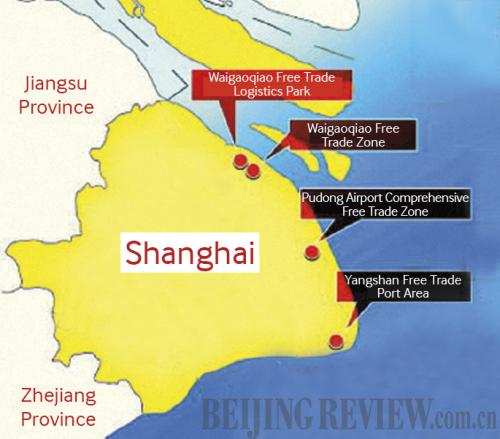|
Guarding against risks
Central authorities should remain highly alert to financial risks in the free trade zone, experts warn.
"The Shanghai free trade zone may conduct some experiments on interest rate liberalization. As a matter of fact, many South Asian countries have tried market-oriented interest rates, but ended up with hefty debts and asset bubbles due to a lack of experience and weak economic power. Even developed countries face many challenges with liberalized interest rates," said Ye.
She also advised the Central Government to take a more cautious approach when it comes to yuan convertibility on the capital account.
"Hefty inflows of foreign capital will create asset bubbles and pressure for the appreciation of the yuan. Therefore, trade, service, technology and logistics companies in the zone should get more freedom in yuan convertibility."
"If China starts yuan convertibility on capital account recklessly, more-than-expected foreign capital may flow to China's housing market, further pushing up already runaway home prices in Shanghai," she said.

Shanghai Free Trade Zone Establishment Timeline
July 3, 2013: The State Council executive meeting approved the plan to establish a free trade zone in Shanghai.
June 28, 2013: The Shanghai Municipal Government handed in its official application for the free trade zone after soliciting opinions from major central government departments.
2010: The National Development and Reform Commission and State Council again sent an inspection group to Shanghai.
2005: Cities including Shanghai, Shenzhen and Tianjin, filed applications to the State Council to establish free trade zones on the basis of bonded areas.
2003: Cheng Siwei, former Vice Chairman of the Standing Committee of the National People's Congress, suggested it was time for China to set up a free trade zone on the basis of existing bonded zones | 